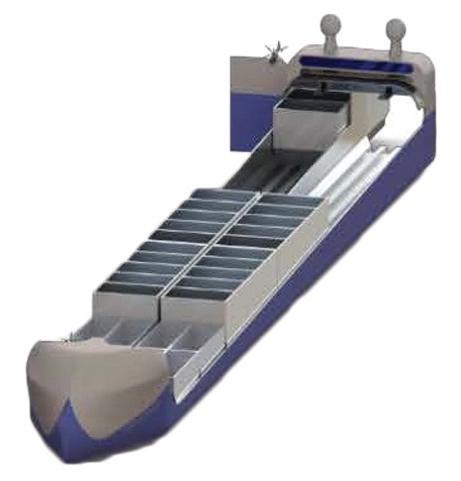
3 minute read
REGULARS
TAURANGA CUTS WASTE AND SAVES MONEY
New Zealand's Port of Tauranga is reaping the benefits of several green initiatives, including achieving a 15.3% reduction in carbon emissions in the last financial year, says Dave MacIntyre
Initiatives include halving the amount of yard waste being sent to the landfill while also saving the port about NZ $215,000 in costs.
Tauranga's Property and Infrastructure Manager, Dan Kneebone, says that to achieve the 15.3% decrease in emissions, the waste stream was audited and opportunities identified for more reuse and recycling into such things as compost.
“We have significantly increased wharf sweeping, which has given us the opportunity to keep different products separated and uncontaminated. That way we can ensure all the bark [from log exports] is captured and recycled into garden products, etc.”
OFFSETTING EMISSIONS
The port works on a system of “insetting” investments to offset carbon emissions - basically taking carbon savings, calculating how much that equates to in carbon credits.
“We invest within the business on projects to reduce our carbon footprint,” says Mr Kneebone. “By way of example, our three new hybrid straddle carriers cost NZ$215,000 each more than conventional diesel-electric models.
“The hybrids have been commissioned less than a year, but we are already seeing an improvement in fuel efficiency of about 25%. We believe insetting is a much more meaningful way to reduce our carbon emissions.”
Tauranga handles container vessels up to 10,000 teu and its annual report includes diagrams showing how the bigger ships serviced by the port create a lower carbon supply chain than its major rival, Auckland. Mr Kneebone says customers are looking for this kind of evidence as part of their own marketing strategies.
“We are experiencing a greater demand from our customers (especially the big ones) for transparency in the supply chain. The blue-water component of the emissions profile is the most significant, and the bigger ships (that only call at Tauranga) offer a much lower carbon option.”
GREEN INITIATIVES
Several other environmental initiatives are being taken by the port. In relation to air quality, Tauranga has identified the key sources of dust and the activities/behaviours that cause fine dust to become airborne.
“We incentivise our customers to reduce the risk of dust generation, e.g. debarking logs, opting for alternative handling methods for cargoes. We've made better use of best practice dust mitigation for activities such as bulk cargo handling of dusty products. We are exploring and utilising new
Other initiatives include reduced fumigant use; wharf sweeping to ensure dust and debris is not washed into the harbour during heavy rainfall; screening and removal of solids and particulate from stormwater; automated shut-off valves on stormwater drains to speed up response to accidental spills at the container terminal; and intensive monitoring/sampling to characterise stormwater and identify potential risks to stormwater quality.
Stormwater is checked for heavy metals, pH levels, petroleum hydrocarbons, suspended solids and dissolved solids.
technologies, such as fine water mist suppression,” says Mr Kneebone.
“We've installed some of these into existing infrastructure (e.g. bulk cargo hoppers and storage sheds). All wharf and cargo storage areas have been sealed to allow for increased wharf sweeping and recovery of dust and particulates. We've educated port users on how their actions can reduce dust (e.g. avoiding driving vehicles through dusty areas where possible, reducing speeds, housekeeping improvements in their work areas).
“We've reconfigured some yard areas to allow for better windbreak protection of higher-risk dusty activities, and installed windbreak fencing on port boundaries.”
8 A sweeper truck cleaning the Mount Maunganui wharves at Port of Tauranga










